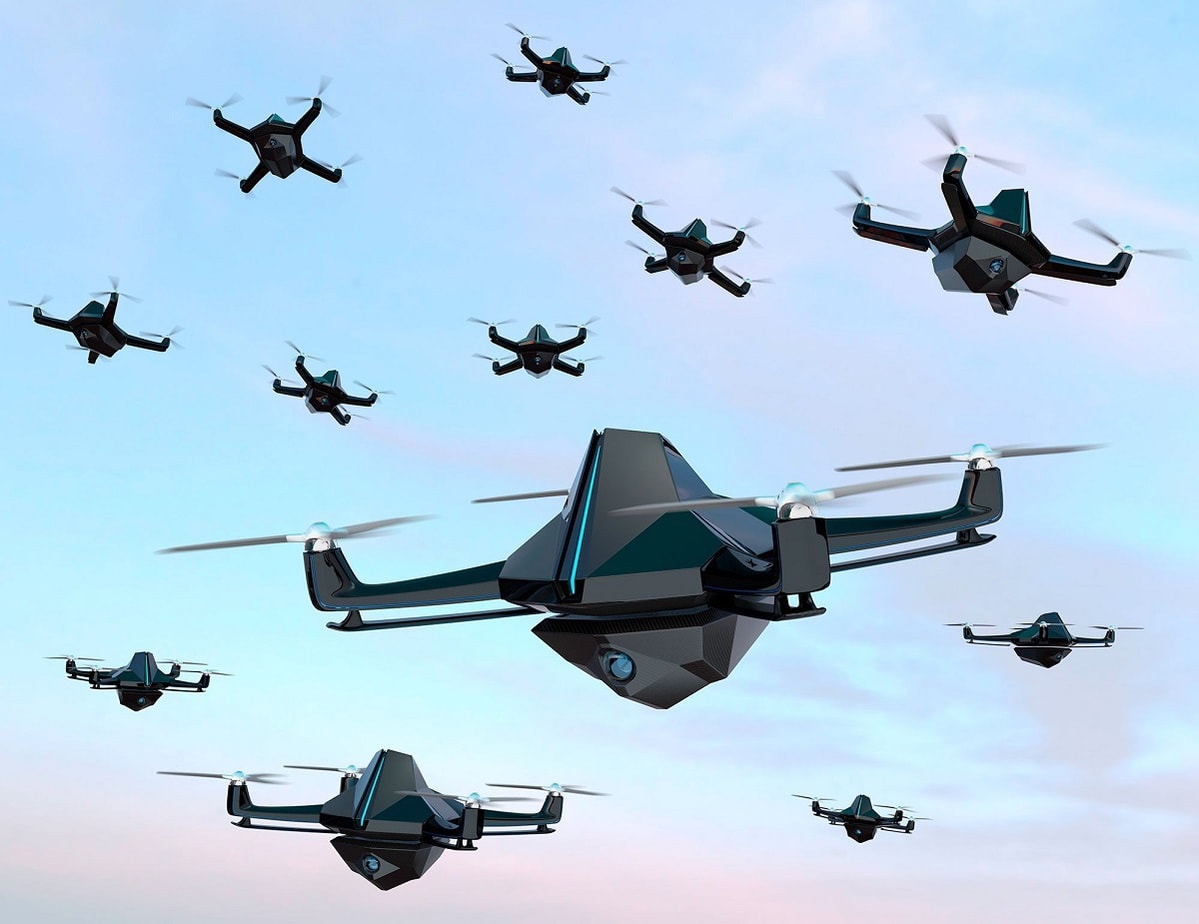The U.S. Army is sending swarms of mini-drones into the sky to test whether they are better at delivering explosive payloads or if they excel at reconnaissance activities. The drone swarm will also be evaluated on battle damage assessment and artillery targeting. Hopefully, the army drones can accomplish all of the above.
They’re called “Air Launched Effects” – mini-drones that the army hopes will “revolutionize” its aviation branch and increase the “speed, reach, vision, and lethality of the army’s aerial fleets.”
What’s the Latest With These Drone Swarms?
Air-Launched Effects were tested in the Utah desert at Dugway Proving Ground during the Army’s annual EDGE war game. Air-Launched Effects were used in the 2020 version of the EDGE exercise by shooting them from a UH-60 Black Hawk helicopter. The swarming drone is also known as the ALTIUS-900 and army personnel tested ranges of up to 286 miles for the ALTIUS. The small, unmanned craft has a nine-inch payload and can loiter for at least four hours. Some are calling the new drones a sort of killer “wolfpack”
Teamwork Makes the Dream Work
The ALTIUS completed an individual use case in previous exercises, now the army currently wants to study these drones and how they interact with each other in swarms.
The branch calls this “intelligent teaming” and it comes down to the individual soldier who decides the best way to deploy a swarmed Air Launched Effect. Should it be used for intelligence, surveillance, and reconnaissance or should it be utilized to blow up an enemy vehicle? How many drones should be used in the swarm? These questions come down to analysis from fire teams, squads, and platoons working with aviation assets. Each of these units must decide how many Air Launch Effects are needed to accomplish the mission with input from the individual soldier.
The Future of Drone Warfare
The swarm tests are comprised of groups of 30 drones. The Air Launch Effects not only have tactical uses at the battalion level and below, but drone swarms also fit into the army’s vision of future warfare.
Dan Goure, writing in Real Clear Defense described a scenario like this. “A future high-end conflict with Russia or China will be a fast, intensive, and highly lethal combat environment. Our adversaries have built an integrated anti-access/area denial (A2/AD) infrastructure designed largely to counter areas of U.S. advantages, deny U.S. forces the ability to operate within their adversaries’ weapons engagement zone, and threaten those U.S. platforms and systems that seek to close within range of their opponent.”
How Will We Get There?
Can the army make Air Launched Effects a regular feature on the battlefield? Ease of use is the critical piece. The first step would be having clear communication from the ground with army aviation above. Drone swarms could be launched from utility helicopters or attack helicopters.
Next would be a battlefield determination from the subordinate units working with battalion commanders for situational awareness. Then it would be choosing the correct mission parameter for the drones – whether attack mode, recon, or collecting targeting data. Then receiving a battle damage assessment for a picture of the over-the-horizon battlefield. This process would be repeated as long as the swarm is in the air.
Integration Is a Challenge, But Worth the Effort
You can see how difficult it will be for the army to integrate drone swarms into infantry or armor doctrine. But the swarms are exciting. The mission set is broad. They will be inexpensive to produce and easy to maintain. It does not present a problem if some are lost due to enemy counter-action. The components are modular to better integrate new technologies for the swarms. The battlefields in Ukraine are filled with numerous types of drones. It’s only a matter of time before swarms enter the mix too.
Now serving as 1945’s Defense and National Security Editor, Brent M. Eastwood, PhD, is the author of Humans, Machines, and Data: Future Trends in Warfare. He is an Emerging Threats expert and former U.S. Army Infantry officer. You can follow him on Twitter @BMEastwood.

